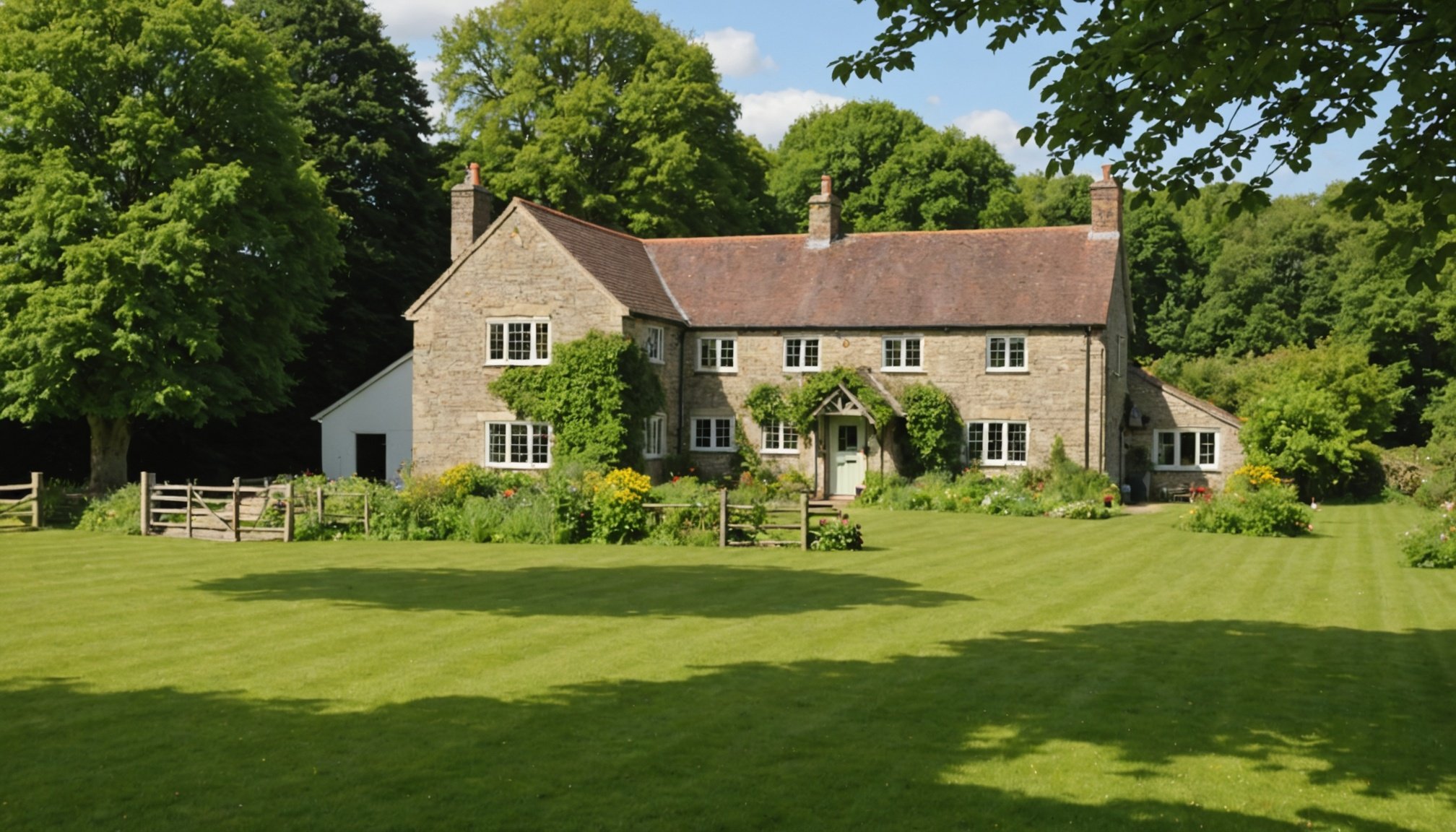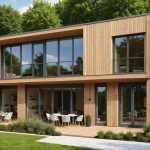Overview of Market Opportunities
The UK agricultural real estate market is undergoing significant transformation as current trends reveal a growing interest in converting agricultural structures for residential use. Many buyers are attracted to the unique character and potential of these properties. With the high demand for unique spaces, agricultural property prices have seen a notable shift.
Trends in Conversion
-
Transforming agricultural structures: Barns, stables, and other rural buildings are increasingly being converted into stylish, modern homes. This trend meets the desire for residences that stand out in terms of architecture and history.
Additional reading : Essential Cost Factors for UK Homeowners Installing Electric Vehicle Charging Stations
-
Residential space conversion: The allure of living in a property with rustic charm is increasing, driven by urban populations seeking tranquility and retreat within the countryside.
Potential Buyers and Their Interests
Buyers interested in converted properties are often motivated by the prospect of unique living spaces and potential return on investment. Individuals or investors are drawn to transforming agricultural structures not only for their aesthetic appeal but also for the chance to escape typical urban environments.
Also read : Mastering the Financial Hurdles of Your UK Farmhouse Renovation: A Comprehensive Guide
The continued interest in conversions provides an intriguing opportunity for stakeholders in the agricultural market, fostering innovation in property transformations.
Benefits of Converting Agricultural Structures
Transforming agricultural structures into residential homes yields numerous benefits, offering a unique aesthetic appeal and distinctive charm. These converted properties often possess character that modern constructions can lack. The historical essence and original materials — like old beams and stone walls — contribute to a living experience that’s both rustic and captivating.
Users of these spaces frequently see a potential for increased property value post-conversion. With proper planning, conversions can attract premium buyers, leading to substantial financial gains. Due to their distinctive features and rarity, converted properties often stand out in the real estate market, making them a lucrative investment.
Beyond their economic advantage, these conversions promote sustainable living with reduced environmental impact. By reusing existing structures, there’s less need for new materials, saving energy and reducing waste. Furthermore, sustainable design elements can be incorporated, such as solar panels and efficient insulation, increasing the structure’s eco-friendliness.
In summary, the conversion of agricultural buildings into homes not only enhances property values but also contributes to a more sustainable lifestyle. Investing in such projects offers a blend of financial, environmental, and aesthetic rewards.
Challenges Faced in the Conversion Process
Converting agricultural buildings into habitable spaces involves several conversion challenges. These often start with identifying structural issues, which can vary based on the age and condition of the building. Common problems include deteriorating roofs, unstable foundations, and inadequate ventilation.
Another significant hurdle stems from building regulations. Each locality might have specific zoning laws and planning permission requirements that need to be met before a conversion can proceed. This process can be time-consuming and requires careful attention to detail to ensure compliance, which can create delays.
Financial implications are also a critical aspect of the conversion process. The costs of conversion can be substantial, involving structural repairs, design modifications, and compliance with modern safety standards. However, potential returns should also be considered. Successful conversions can increase property value significantly, offering long-term financial benefits despite initial expenditures.
Understanding these challenges is crucial for anyone considering such a project. Whether it’s navigating zoning regulations, tackling structural repairs, or evaluating financial feasibility, careful planning is necessary to avoid unforeseen complications and maximise potential rewards.
Legal Considerations
Understanding the legal aspects of any construction project is crucial for ensuring compliance and avoiding potential fines. This section explores the various areas where legal considerations are key, such as planning permission and adherence to building regulations, as well as the importance of environmental impact assessments.
Planning Permission Process
Securing planning permission is a fundamental step in the conversion process. The complexity of the planning permission process can vary depending on the nature and scale of your project. Engaging with local authorities early can prevent future delays. Planning permission ensures that your project aligns with local zoning laws and community plans, protecting both your investment and the environment.
Building Regulations
Another essential aspect is compliance with building codes. Understanding the building regulations for conversions is vital to ensure that your project adheres to safety and structural standards. Regulations can cover everything from fire safety to energy efficiency, demanding attention to detail during the planning stages.
Environmental Impact Assessments
A significant component of planning is the environmental impact assessment (EIA). This process evaluates how the conversion might affect the local environment. Obtaining necessary permits often requires an EIA, emphasizing sustainability in both design and execution for long-term benefits and ecosystem safety.
Cost Analysis and Funding Options
Exploring financial analysis is crucial when considering agricultural property conversions. Understanding the breakdown of conversion costs can significantly aid in planning. These conversions typically involve costs like labor, materials, and necessary permits, which each play a substantial role in the overall expenditure. Labor expenses may fluctuate depending on the project’s location and complexity. Material costs are also variable, impacted by the choice of environmentally friendly or traditional materials.
Securing funding for conversions can be facilitated by exploring available grants or financial incentives specific to agricultural projects. Many government programs offer financial support to encourage sustainable practices on agricultural lands. Prospective converters should research these options thoroughly and consider them as viable funding avenues.
Budgeting tips are essential for individuals embarking on this transformative journey. Prospective converters should start by developing a comprehensive budget plan. This plan should include estimated costs for labor, materials, and permits, alongside a contingency fund for unforeseen expenses. Seeking advice from financial experts or consultants can also enhance the accuracy of financial projections. An effective strategy balances accurate cost forecasts with secured funding to ensure successful project completion.
Design Inspirations and Best Practices
While preserving the historical essence of agricultural buildings, modern interior design trends take a contemporary twist. Harnessing clean lines and incorporating open spaces are crucial in blending tradition with chic aesthetics. Restoration can often present challenges, but innovative design ideas effectively marry the old with the new, making rooms spacious yet inviting.
Modern Interior Design Trends
Current trends infuse rustic elements with sleek, industrial touches. This juxtaposition is evident in choices like exposed beams or brickwork contrasted with polished concrete or glass features. Selecting neutral palettes further accentuates these rustic-modern combinations, offering a cohesive and harmonious look.
Preserving Original Features
Retaining original features remains central. Not only does it honour the building’s history, but it also enhances character. Techniques like gentle sandblasting help restore brickwork without causing damage, and refinishing original wood contributes authenticity and warmth. Careful consideration should be given to preserving these features to ensure longevity and respect for the building’s heritage.
Outdoor Spaces and Landscaping
Transforming outdoor areas enhances the home’s functionality and appeal. Recognising the unique rural setting, owners can balance modern landscaping with native plants to uphold local biodiversity. Establishing pathways and seating areas helps create welcoming spaces for relaxation or gatherings, entwining nature with daily living.
Successful Case Studies
Exploring transformation success stories offers valuable insights into property conversions. Across the UK, numerous case studies highlight innovative approaches and successful outcomes in the refurbishment of old buildings into modern, functional spaces.
One notable example is the conversion of historical factories into vibrant community centres. These projects not only preserve heritage but also foster community spirit. The refurbishment of estates in Manchester has created job opportunities, enhanced local economies, and provided much-needed community facilities. The transformation of dilapidated warehouses in London’s East End into trendy loft apartments is another remarkable case. New residents enjoy rich cultural settings, boosting local businesses and neighbourhood vibrancy.
Key Takeaways
In successful property conversions, important lessons emerge:
- Strong collaboration among stakeholders ensures seamless execution.
- Flexibility in planning accommodates unforeseen challenges.
- Sustainable practices and eco-friendly materials are paramount for long-term efficacy.
Community Impact
Conversions often revolutionise entire communities. For instance, turning a derelict church in Bristol into a public art space enhanced cultural access. The project’s positive reception underscores the importance of aligning redevelopment goals with community needs, bridging tradition with modernity.
These stories exemplify how property transformation can revitalize areas, preserving history while fostering social and economic growth.
Resources for Investors and Homeowners
For those navigating the process of converting properties, numerous conversion resources are available that can help streamline the journey. Seeking investor support from experienced professionals and engaging with online communities can enhance both understanding and results.
Planning and Architecture Firms
Engaging with reputable planning and architecture firms is critical. These professionals specialize in understanding the complexities of property conversion resources, providing detailed plans that comply with local regulations and fit investor expectations. Addressing structural and aesthetic elements ensures a smooth transition, vital for a successful conversion.
Financial Advisors Specializing in Real Estate
Collaborating with financial advisors who focus on real estate is essential for effective investor support. These experts offer tailored strategies for managing finances efficiently during a conversion. They provide critical insights into cost estimation, budgeting, and potential return on investment, enabling investors to make informed decisions crucial for financial success.
Online Communities and Support Groups
Participating in online forums connects you with others who share similar conversion interests and challenges. These platforms serve as valuable conversion resources, offering firsthand experiences, advice on overcoming obstacles, and creative solutions. Support groups facilitate a collaborative environment where learning and resource-sharing are paramount for both new and seasoned investors.











